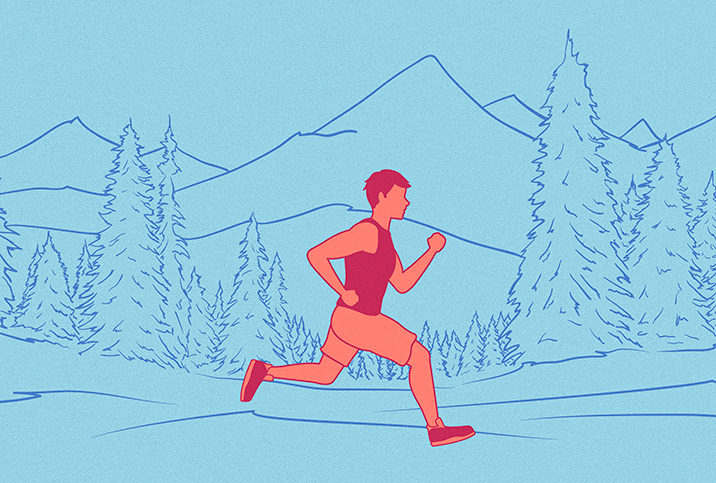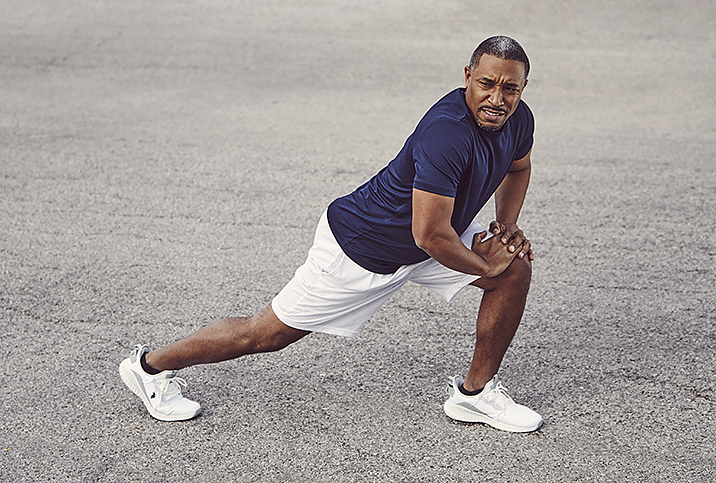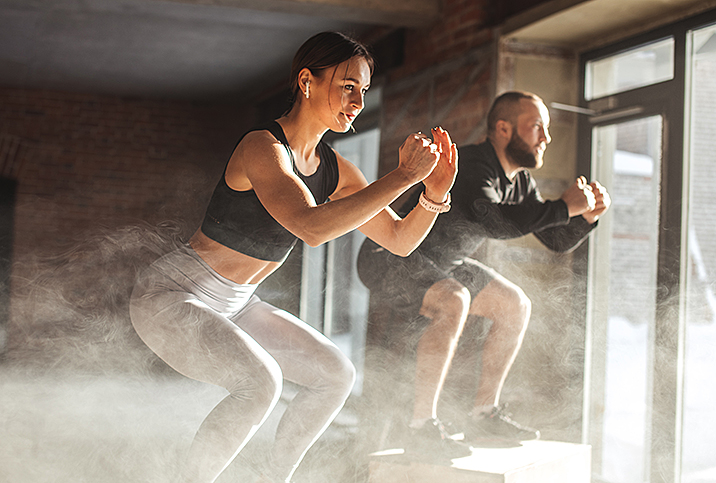Winter Weather Workouts Help You Feel the Burn

Exercising outside in cold weather is unlikely to get most people excited. The thought of bundling up and lacing up sneakers when the thermometer hovers around freezing might make even the hardiest of us want to pile on the blankets and stay inside.
But sticking to an outdoor workout when the temps are less than comfortable can actually bring some benefits, as long as you make wise decisions.
At least I'm not sweating…
Exercising in cold weather is generally considered safe, and carries all the same benefits as exercising in more moderate temperatures. These include benefits to your cardiovascular and muscular systems if you're running, cycling or strength training.
However, the benefits of cold-weather exercise extend way beyond the obvious.
"There's a decreased risk of overheating or placing added stress on thermoregulation, and the issues that come along with that related to sweat loss: loss of plasma volume, the resulting decreased stroke volume, and relying on an increased heart rate to continue exercising at the same intensity," explained Lem Taylor, Ph.D., professor and director of the Human Performance Lab in the department of exercise and sport science at the University of Mary Hardin-Baylor in Belton, Texas.
Basically, the very act of sweating—which more significantly kicks into gear in moderate and hot temperatures—can lead to negative physiological changes that impact performance. But exercising in warmer environments isn't just physically taxing, it can be mentally taxing, too. How you feel about the exercise you're performing, and the conditions in which you're exercising, can affect how well your workout turns out.
"Thermal stress or strain is one of the more correlated negative influencing factors on the body," Taylor said. "So, in general, exercising in cold or much cooler conditions can result in working at a lower rate of perceived exertion, which could equate to a greater amount of exercise volume performed compared to a higher heat environment."
In essence, doing a three-mile run in 85-degree weather may end up feeling much harder than running the same distance in 55-degree weather. As a result, if your planned run feels a little easier in colder weather, you might run farther or at a higher intensity—and that would be good.
Depending on how you decide to gear up, keeping your layers minimal might help increase your workout's calorie burn.
"Sweating in hot weather doesn't burn more calories, it only serves to cool you down. But shivering in cold weather does," said Laura Flynn Endres, a private personal trainer in Los Angeles and founder of the online team fitness game Get Fit Done. "Shivering uses energy to warm you up, so you're burning more calories in cold temperatures, even at rest."
Endres also pointed out that while the area of research is still new and needs further investigation, cold-weather exercise may positively impact metabolism in other ways.
"Some studies have shown that after repeated exposure to cold, participants had increased brown fat—the 'good' fat—and an increased metabolic health, making exercise and exposure to cold good for reducing the risk of metabolic conditions like type 2 diabetes, heart disease and other degenerative conditions," she explained.
You also can't ignore the mental health benefits of exercising outside. These benefits just don't occur when it's 85 degrees and sunny. Just 10 minutes of any outdoor exercise can have positive mental health outcomes, including improved mood and decreased feelings of anxiety or depression. During the cold, winter months, when days are short and often dreary, taking advantage of outdoor workouts can make a big difference in how you feel.
"Exposure to natural sunlight and vitamin D and a dose of nature can ward off the seasonal blues," Endres noted. "It's tempting to hole up in colder temps, but for most of us, that means less movement and overall worsened moods."
Details to consider before heading outside
Of course, there's a difference between 45-degree Fahrenheit weather and weather that plunges below zero. It's important to be conscious of the risks of working out in very cold temps, particularly if wind, rain, sleet or snow are involved. When the weather patterns are particularly gnarly, it might just be a better idea to keep your workouts inside, but if you do decide to venture outside, be smart about how you dress to avoid the risk of hypothermia.
"Invest in the proper workout wear designed for cold temps," Endres advised. "Also, consider layers that are easy to remove as you warm up and put back on as you cool down."
If you're planning to exercise in snowy or icy conditions, make sure your footwear is designed to help prevent slips and falls. You can attach clip-on treads to your workout shoes to help improve traction in wintry weather.
It's important to remember cold, stiff muscles don't move as well as warm ones.
"Cold muscles are at greater risk of strains and injury, so avoid stretching before you begin your workout," Endres said. "Instead, begin with controlled, dynamic moves to get the blood flowing and begin to increase your body temperature. Exercises like arm circles, high knee marching in place and what I call 'baby squats,' where you only lower halfway down, are all good options. As you get warmer, you can increase your range of motion and add bigger movements, like lunges and deeper squats and jumping jacks."
Good workout choices for cold weather
You can do any workout in the cold, but some are naturally better suited for freezing temperatures. Certainly, winter sports such as skiing and snowboarding are popular, but they tend to be "special occasion" activities rather than regular exercise for most people.
"If your goal is to simply take advantage of the benefits of cold-weather workouts, head out for a brisk walk, a run, a hike or even a set of squats, pushups and jumping jacks," Endres suggested. "It's easy to make those 'get up and go' workouts a regular part of your winter routine."
On the other hand, you might want to skip workouts that are slower-moving or won't significantly warm up your muscles. For instance, yoga or tai chi are probably best done inside when the temps dip too low.
At the end of the day, barring hazardous weather, cold-weather workouts are safe and may offer extra health benefits. But as the saying goes, the best workout is the workout you'll consistently do. In other words, the workout itself is the important part—whether it's indoors or outdoors doesn't matter as much.
If cold-weather exercise sounds like a form of personal torture, your best option is to maintain indoor workouts instead. You can always save the outdoor workouts for the days when the thermometer creeps back up.


















